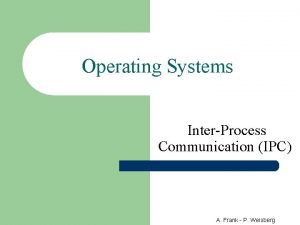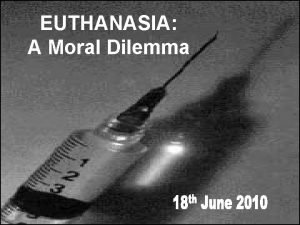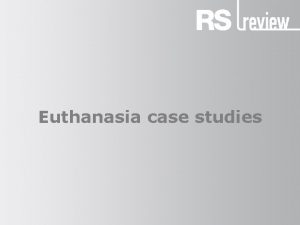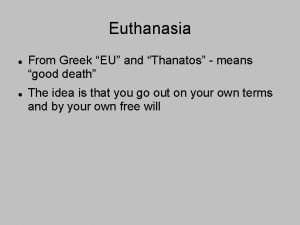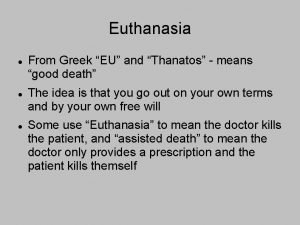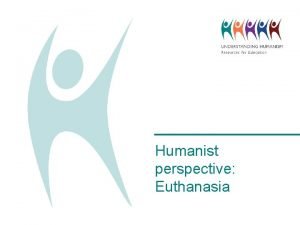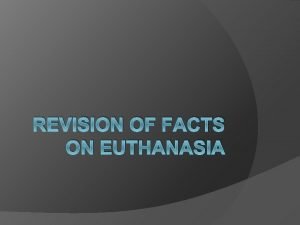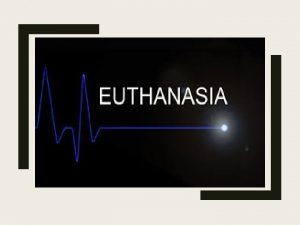EUTHANASIA DYING WITH DIGNITY Euthanasia or means allowing









- Slides: 9

EUTHANASIA “DYING WITH DIGNITY”

• Euthanasia, or ________means allowing or enabling people to die in a relatively painless way. • The debate over euthanasia goes back at least to the time of _______, the ancient Greek physician known as the Father of Medicine. • “Hippocratic Oath”

• _________________ ___A competent adult has the legal right to refuse treatment even if this refusal will result in death.

• _____________Under certain circumstances, family members may request that life-sustaining machines or treatment be stopped for patients with little or no hope of regaining consciousness.

• _____________A patient may request his or her physician to administer powerful drugs such as morphine to ease unbearable pain and suffering. The patient knows that these drugs are also likely to bring death more quickly.

• _____________A physician assists in the suicide of a dying patient, usually by supplying him or her with a lethal drug and the means to take it.

• _______________A physician performs the death-causing act after determining the wishes of the patient or the patient’s family. This form of euthanasia is illegal in the United States, although a few physicians—such as Dr. Jack Kevorkian—have performed it and have been convicted of breaking the law.

COURT CASES • In 1975, Karen Ann Quinlan, a New Jersey (U. S. ) 21 year-old, was in a “persistent vegetative state” caused by her taking a mixture of drugs and alcohol. Doctors told her parents that there was little hope she would ever regain consciousness. Karen’s parents asked a court for permission to remove her from a respirator (breathing machine). The New Jersey Supreme Court eventually agreed with their request, ruling that a person had the right to refuse medical treatment.

COURT CASES • In the 1990 decision Cruzan v. Missouri, the U. S. Supreme Court affirmed the right of patients to refuse or discontinue life -sustaining medical treatment. • In 1991, voters in the State of Washington (U. S. ) turned down a ballot initiative that would have permitted “physician aid in dying. ” Shortly afterward, the Washington state legislature passed a law forbidding physician-assisted suicide. Opponents challenged the law in the courts, arguing that competent terminally ill adults had a “fundamental liberty right” to have physician assistance in committing suicide. • In the 1997 decision Washington v. Glucksberg, the U. S. Supreme Court disagreed; instead, the Court left the decision to each state.
